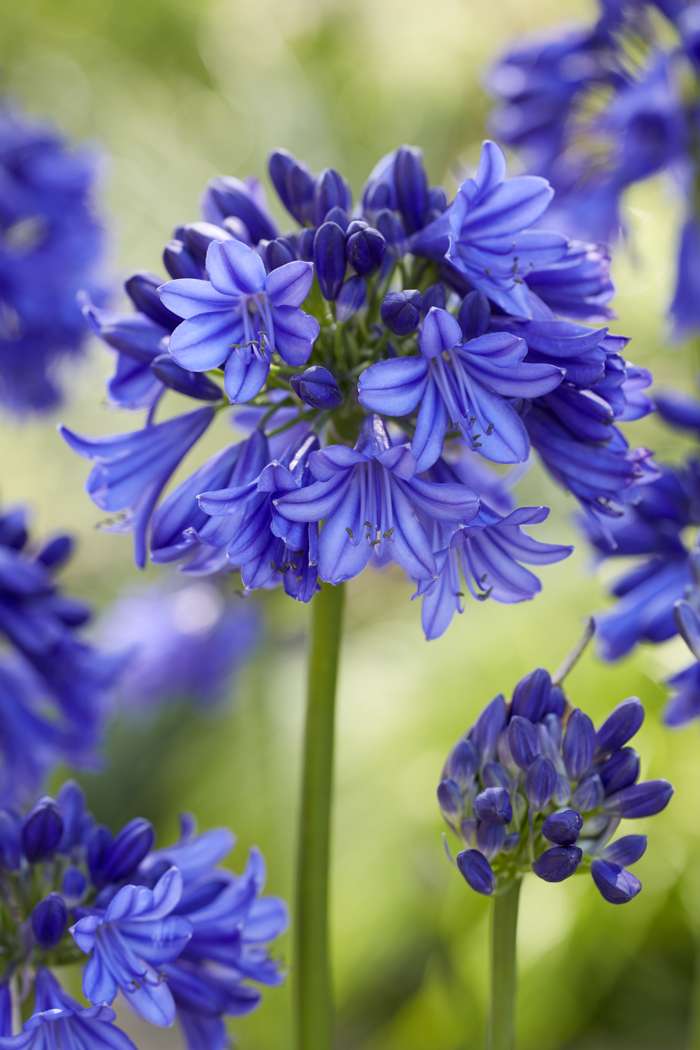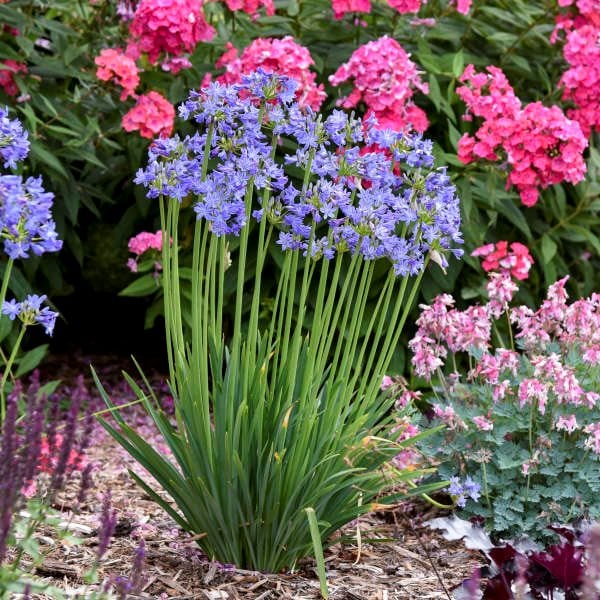Letting Loose the Secret to Successful Agapanthus Cultivation: Tips and Techniques for a Flourishing Garden
In the world of gardening, growing agapanthus effectively calls for a tactical strategy that encompasses numerous facets of plant treatment. With mindful focus to detail, one can open the keys to supporting these stunning blossoms, leading to a garden that prospers with appeal and vibrancy. By understanding the nuances of agapanthus farming, one can produce a setting where these plants grow and bloom generously. In the complying with discussion, we will discover crucial pointers and tricks that will certainly guide you towards a thriving agapanthus garden, offering understandings into finest methods, soil problems, watering strategies, and more.
Growing Agapanthus: Best Practices
When planting Agapanthus, correct dirt prep work is vital for making certain effective development and advancement of these stunning flowers. Agapanthus, typically referred to as Lily of the Nile or African lily, grows in well-draining soil with a slightly acidic to neutral pH degree - Agapanthus. Prior to planting, it is important to amend heavy clay soils with raw material such as garden compost or peat moss to improve drain and provide crucial nutrients for the plants
To plant Agapanthus, choose a place that obtains full sunlight to partial color, as this will advertise healthy growth and plentiful blooming. Dig an opening two times the size of the plant's origin round and position the Agapanthus at the very same depth it was formerly growing. Delicately backfill the opening with soil, weighing down firmly to get rid of any kind of air pockets around the origins.
Water the newly grown Agapanthus thoroughly and remain to maintain the soil equally moist, especially throughout the plant's energetic growing season. Agapanthus. Using a balanced fertilizer once a month can better support the plant's growth and blooming. By following these best techniques for growing Agapanthus, you can produce a stunning display screen of these fascinating flowers in your garden
Perfect Dirt Conditions for Agapanthus
For optimum growth and growing success of Agapanthus plants, making certain the soil problems are excellent is crucial. Agapanthus grows in well-draining soil with a somewhat acidic to neutral pH degree ranging from 6.0 to 7.0. This type of dirt enables ample water drain, avoiding waterlogging which can bring about root rot. To enhance dirt drainage, think about adding raw material such as garden compost or peat moss when preparing the growing site. Moreover, Agapanthus prefers soil that is rich in nutrients, so including a well balanced fertilizer during the expanding period can promote healthy growth and vibrant blossoms.

Watering and Feeding Tips
To make sure healthy development and lively blooms, proper watering and feeding techniques are essential for successful Agapanthus cultivation. Agapanthus plants profit from routine watering, especially during the growing season.
When it concerns fertilizing Agapanthus, a well balanced fertilizer with equal parts nitrogen, phosphorus, and potassium can be used in the springtime to promote healthy and balanced development and flowering. Slow-release plant foods are excellent for offering nutrients gradually over an extended duration. Prevent over-fertilizing, as this can bring about excessive foliage growth at the expense of blossoms.
Additionally, including raw material like compost into the dirt can boost nutrient levels and enhance dirt framework, aiding in the overall health of the Agapanthus plants. By complying with these watering and feeding suggestions, garden enthusiasts can ensure their Agapanthus plants thrive and create spectacular display screens of flowers.
Pruning and Deadheading Methods
Proper trimming and deadheading methods play a critical function in maintaining the wellness and looks of Agapanthus plants, complementing the crucial practices of watering and feeding for successful farming. Pruning Agapanthus includes removing invested flower heads, yellowing or dead fallen leaves, and overall shaping of the plant to advertise much better growth. Deadheading, the procedure of removing discolored flowers, not Check This Out only boosts the plant's appearance however additionally motivates further flowering.
When deadheading Agapanthus, it is suggested to snip off the blossom stem at the base utilizing sharp, clean shears. This process reroutes the plant's energy from seed manufacturing back right into origin and vegetation development, advertising a much healthier and a lot more robust plant. Routine deadheading can expand the blooming period of Agapanthus and avoid self-seeding, which can bring about overcrowding.
In regards to trimming, Agapanthus generally gain from a light trim after blooming to clean the plant and motivate fresh growth. Reducing the spent blossom stems and eliminating any type of dead or damaged vegetation aids maintain the plant's vitality and total look. Nonetheless, it is important to prevent reducing right into the crown of the plant, as this can damage its health.

Protecting Agapanthus From Vermins and Diseases
Applying efficient insect and disease monitoring approaches is vital to securing the health and vitality of Agapanthus plants in farming. One typical insect that affects Agapanthus browse around here is the Agapanthus borer, a caterpillar that passages into the plant, causing damages to the fallen leaves and blossoms.
In addition to parasites, Agapanthus are vulnerable to illness such as origin rot and fungal fallen leave places. By remaining alert and resolving pest and illness concerns promptly, gardeners can assist their Agapanthus flourish and grow.

Final Thought
To conclude, effective farming of agapanthus needs proper growing techniques, excellent soil conditions, adequate watering and fertilizing, regular pruning and deadheading, and protection from illness and pests. By complying with these ideas and methods, garden enthusiasts can make sure a prospering yard loaded with stunning agapanthus blooms. Agapanthus. Keep in mind to preserve consistent care and attention to information to advertise the health and wellness and durability of these stunning plants
When growing Agapanthus, correct dirt prep work is essential for guaranteeing successful development and growth of these stunning flowers.Water the newly grown Agapanthus extensively and continue to keep the soil equally moist, specifically during the plant's active expanding period.For optimum growth and blooming success of Agapanthus plants, guaranteeing the soil problems are suitable is vital. When hair transplanting or growing Agapanthus, guarantee the soil is well-prepared to offer the essential structure useful content for the plants to develop themselves effectively. One usual pest that influences Agapanthus is the Agapanthus borer, a caterpillar that tunnels into the plant, creating damages to the leaves and blossoms.